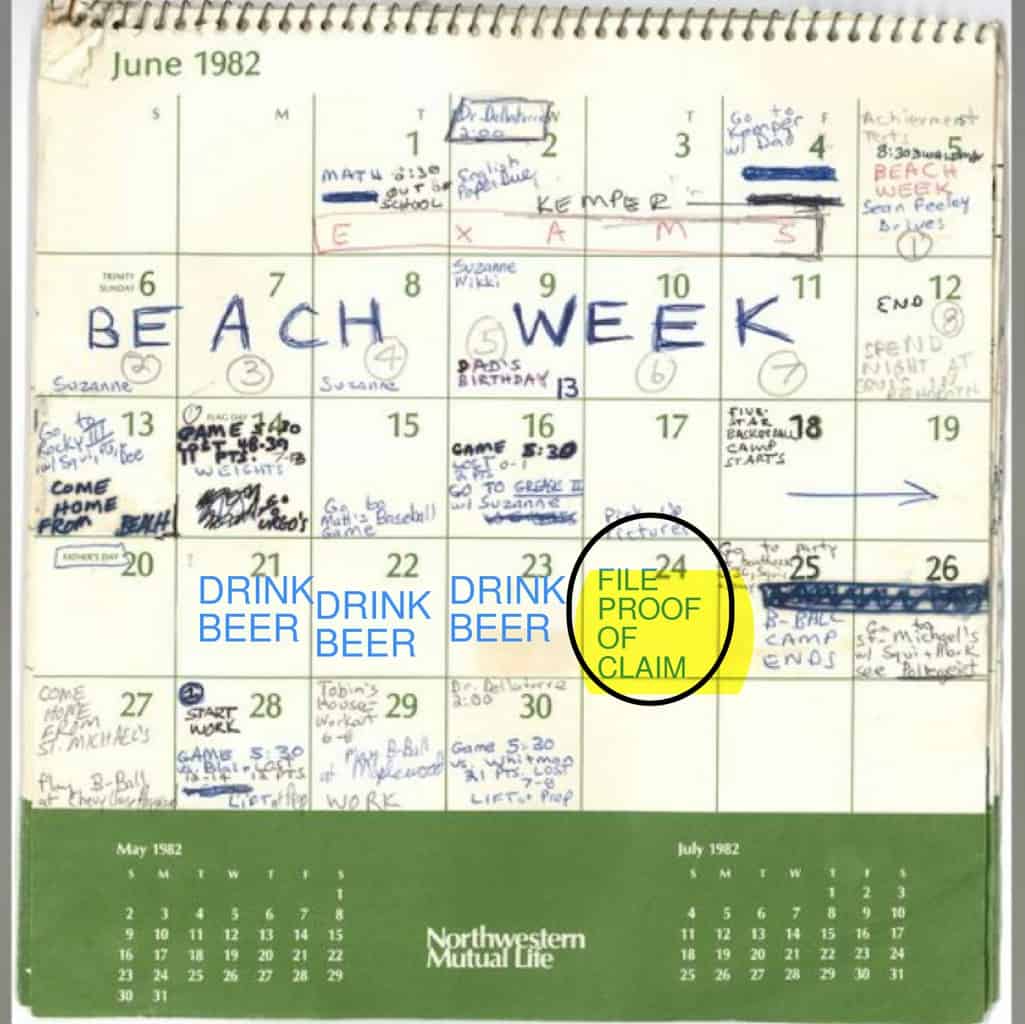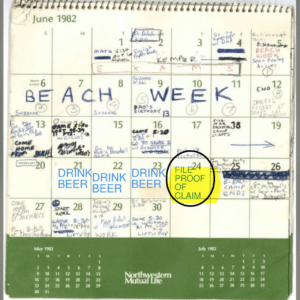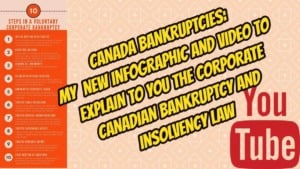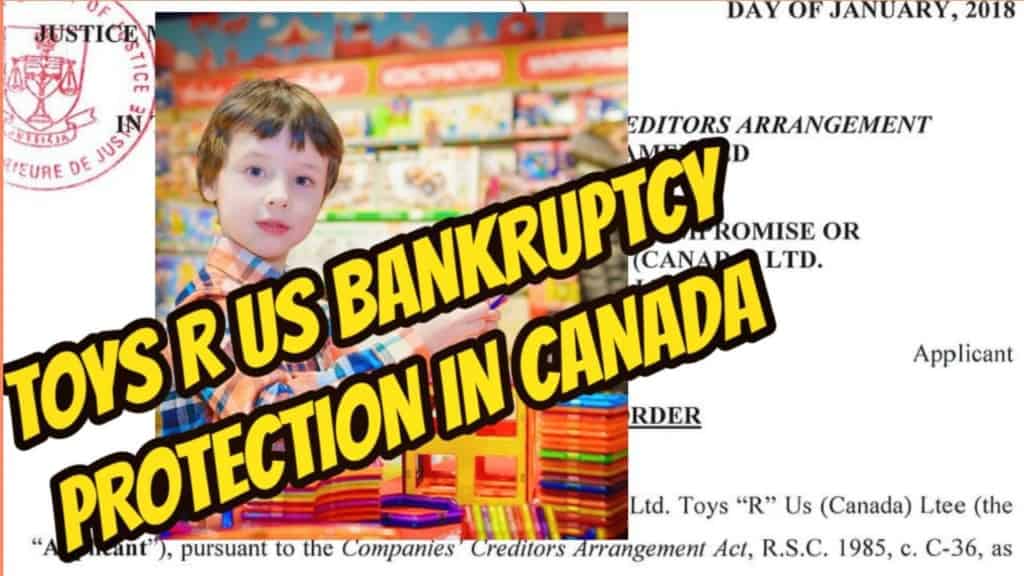Form 31 proof of claim: Introduction
In last week’s vlog, I reviewed why it is important to complete a form 31 proof of claim truthfully, and the penalties for filing a false claim. For both personal and corporate insolvency files, creditors call asking how to complete the document. I discuss in this vlog why it needs to be completed properly. I also provide a link in this blog that you can click on to see how to properly complete the form step by step.
The reference to “form 31” is merely the number of the form given to the form 31 proof of claim form under the Canadian Bankruptcy and Insolvency Act (R.S.C., 1985, c. B-3) (“BIA”).
What is the form 31 proof of claim form?
Completing and returning form 31 is the second phase in the bankruptcy process. They are included with the notice of bankruptcy documents mailed out by the licensed insolvency trustee (formerly known as a bankruptcy trustee) (the “Trustee”) to formally notify the creditors of the bankruptcy.
When properly completed and filed by each creditor, they are what a Trustee uses to compare the debt as listed on the debtor’s bankruptcy sworn Statement of Affairs. The amount claimed by a creditor is normally different than the amount of the debt listed on the bankruptcy schedules. The reason for this is normally because the creditor’s records are accurate to the penny, while the bankrupt’s records are usually not up to date.
The process is the same whether you are filing a secured claim, an ordinary unsecured claim or a priority claim, which is also unsecured, under s.138 of the BIA. What is important is that you need to have a provable claim.
If the Trustee determines that you have either an unliquidated claim or a contingent claim, there will be additional steps you will need to take for the Trustee to be able to ascribe a value and for you to have a properly proved claim.
Form 31 proof of claim: Form 31
In every:
the Trustee will supply to all creditors form 31 document. If the debtor who intends to restructure first files a Notice of Intention To Make a Proposal, a claim form is not sent out at that stage. It will be sent with the actual restructuring proposal and other related documents.
The same document contains both where you can make your claim as well as complete the proxy form, if applicable. Creditors may experience difficulty completing the document. So, the Trustee provides instructions on how to complete the claim form and proxy. That is also why I have provided a step-by-step instruction sheet from the link below so you can follow exactly how to complete the form.

Form 31 proof of claim: Acceptability of proof of claim
It is important to properly complete the document. It must be completed fully and properly. The claim must include all necessary details called for under the BIA. Below is a link to an example on how to properly complete the form 31 proof of claim. A Trustee is required to review all proofs of claim received.
The purpose of this is to know what claims are acceptable to be admitted for voting at the First Meeting of Creditors. Also, all proofs received either before or after the creditors’ meeting must also be reviewed carefully to make sure that they are acceptable if there is a dividend to be paid on the claims in the insolvency proceeding.
The Chair of the creditors meeting has the power to admit or disallow claims for the purpose of voting at the meeting. The Trustee has the same power for the proofs of claim for dividend purposes. Most times the Trustee will also be the Chair at the meeting of creditors.
It is incumbent on the Trustee to communicate with creditors whose claims the Trustee believes to be deficient. The purpose is to obtain additional information to make a final determination. The Trustee has to decide whether to admit or disallow a specific claim.
As you can see, completing the document properly is essential.
Does a creditor have to file a claim?
Nobody will force a creditor to file a claim in a bankruptcy estate. A creditor’s claim becomes valid when the creditor files it and the Trustee accepts it. . When a creditor files a claim against a bankruptcy estate, the creditor is making a claim that the Trustee should record and count their claim so that the creditor will be entitled to receive their pro-rata share of any dividend payments that may be made.
The Trustee will issue the maximum payment each creditor is entitled to when the bankruptcy estate is liquidated. When a creditor files a claim, the creditor also becomes an interested party in the bankruptcy case. An interested party is a person who has a vested interest in the bankruptcy case. If the claim is filed before the First Meeting of Creditors in bankruptcy, then the creditor has the right to participate in and vote at the meeting.
Form 31 proof of claim: My example
CLICK HERE TO SEE AND DOWNLOAD PROPERLY COMPLETED
FORM 31 PROOF OF CLAIM

Can I file a proof of claim after the deadline?
There are really only two important deadlines when it comes to filing a claim. The first is before the First Meeting of Creditors. As mentioned above, if you wish to participate in that meeting, then you need to have filed a properly completed valid claim before the start of the meeting. However, if you don’t file it by then, although you won’t be able to vote at the meeting, you have not lost out on anything else.
Once all the realization of assets of the bankrupt has been completed, being both the current assets, fixed assets, and possibly even intangible assets, if the Trustee has sufficient funds to issue a dividend payment, then the Trustee has to review all the claims filed. The Trustee also has to compare the claims register containing all of the creditor claims filed against the names and amounts listed in the bankrupt’s sworn Statement of Affairs.
If any creditors have not yet filed, and there will be a payment made to the unsecured creditors, the Trustee has to send a specific notice pursuant to the requirements of the BIA to each such creditor. The notice in writing says that a dividend will be paid, and if you don’t file your claim by a specific date, then you will be barred from receiving any payment.
How do I object to a form 31 proof of claim?
First, you have to be a creditor with a proven claim accepted by the Trustee. The BIA states that any creditor can inspect the claims filed. So if you have personal knowledge that a party listed on the sworn Statement of Affairs is really not a creditor, then you would be assisting the Trustee by reviewing the claims filed and pointing out any claims you believe are invalid, and why. However, it is very unusual for a creditor to take the time to do so.
The next opportunity and really the only time it matters, for a creditor to object to a claim filed by a creditor is if a dividend distribution is going to be made and the Trustee sends out the Final Dividend Sheet. If you think there are errors, then you can object to the approval of the Trustee’s Final Statement of Receipts and Disbursements and the Dividend Sheet.
Reasons that you may feel one or more claims are incorrect could be:
- You do not believe that someone that has filed as a secured creditor can provide adequate proof of security with their claim.
- You feel that the compromise of claims being proposed is improper.
- There may be details of payments received by a creditor are missing and therefore their claim is overvalued.
- The priority of claims listed is improper.
- The priority of payment as listed in the Trustee’s Final Statement is incorrect.
- Some of the more complicated claims, such as the claim of lessor, a claim by wage earner, claim by farmer or another claim for employees have been incorrectly calculated by the Trustee.
If you have any concern that there is an error with the amounts being claimed, or if you believe that there are circumstances where one or more claims are not valid, you should immediately communicate this to the Trustee.
Keep in mind that once the Trustee issues the Final Statement with Dividend Sheet and has the intention of making a payment to all creditors with valid claims, you have to file your own objection within 30 days of the date on which the notice was issued.
Form 31 proof of claim: Do you need help?
Do you or your company have too much debt? Is a financial restructuring or debt settlement plan necessary but you just don’t know where to start? If so, then you need the help of a professional trustee.
The Ira Smith Team has years of experience of helping individuals and companies successfully complete their restructuring proposal debt settlement plans. Our approach for each file is to create an end result where Starting Over, Starting Now takes place. This starts the minute you are at our door.

You’re simply one phone call away from taking the necessary steps to get back to leading a healthy, balanced hassle-free life, recover your money and move on to the next investment opportunity. Call us today for your free consultation.




